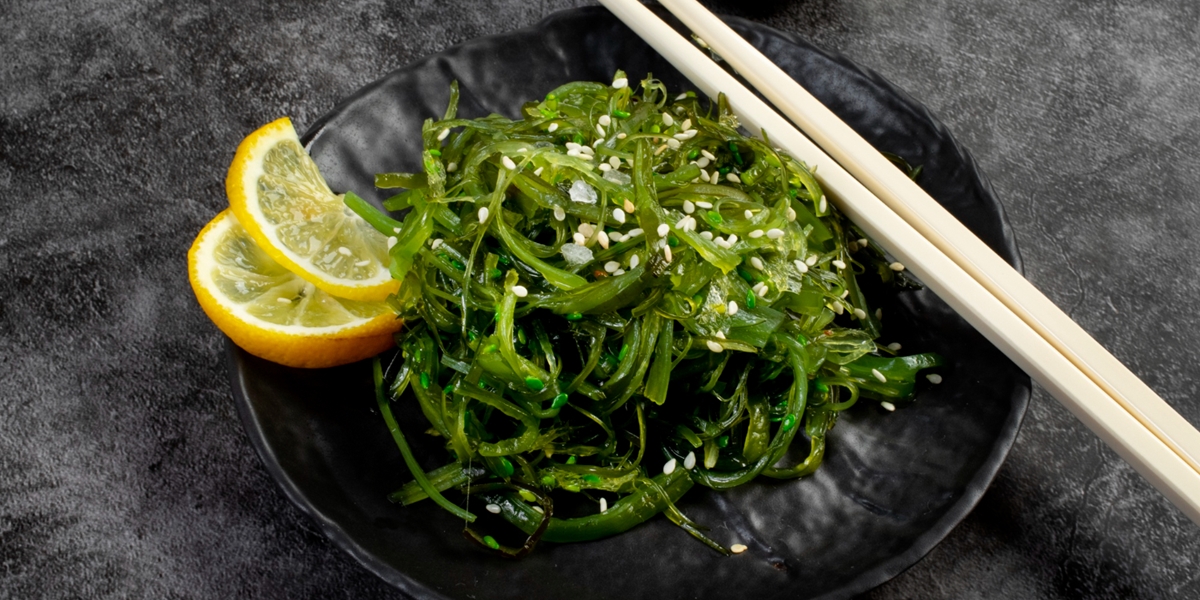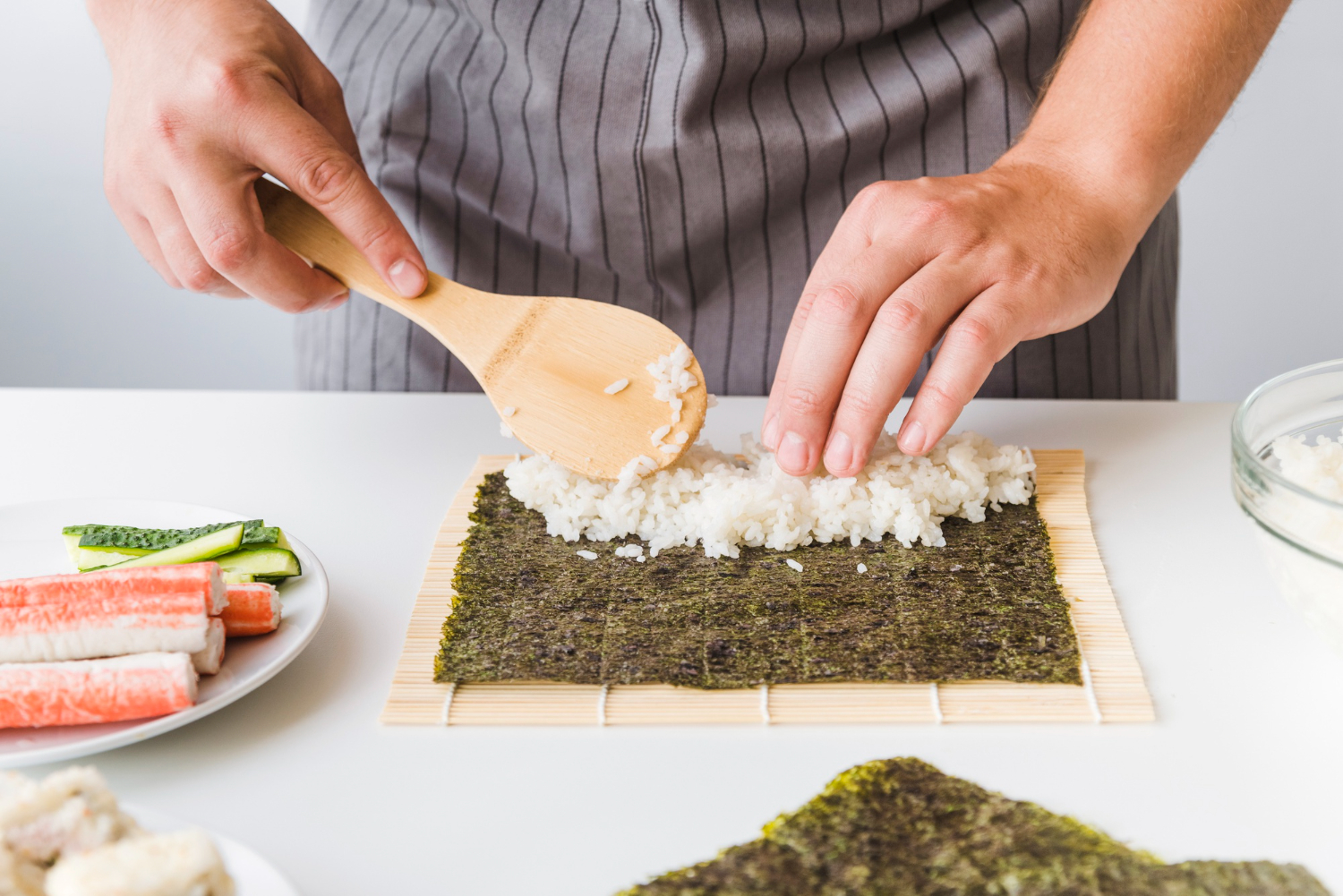4 Meanings of Acne Primbon on the Back of the Head, Could Be a Warning of Negative Energy
Curious about the explanation of the meaning of acne primbon on the back of the head? To find out, just read the following review.

Kapanlagi.com - Japanese seaweed is called "kaisou" which plays an important role in Japanese culinary culture. As a nutritious and flavorful ingredient, seaweed has become an integral part of various traditional and modern Japanese dishes.
There are several types of seaweed, and each type offers a unique texture and taste that enriches the dining experience. This article will discuss the explanation of Japanese seaweed and also the types of seaweed, as well as a list of processed seaweed foods.
Let's take a look at the explanation of Japanese language seaweed, which is one of the most valuable ingredients in Japanese cuisine. Check it out, KLovers.

Illustration (credit: freepik.com)
In Japanese, seaweed is called "kaisou", and it is an important part of Japanese culinary culture.The use of seaweed in Japanese cuisine is not only because of its distinctive taste, but also because of its rich nutritional content.Here is a detailed explanation of various types of seaweed that are often used in Japanese cuisine:
1.Nori
Nori is best known as a wrapper for sushi and onigiri (rice balls). In addition, nori can also be eaten directly as a snack or used as a topping for dishes like ramen and soba.Nori itself is made from a species of red seaweed that is washed, pressed, and dried into thin sheets.These sheets are then toasted before packaging.
2. Wakame
Wakame is often found in miso soup, salad, and various seafood dishes. Its soft texture and light taste make it suitable for various dishes. Wakame is usually sold in dried or fresh form. To use it, dried wakame needs to be soaked in water until it expands.
3.Kombu
Kombu is the main ingredient in making dashi, the basic broth for many Japanese dishes such as miso soup, ramen, and various sauces. Kombu is also used in simmered dishes and tsukudani (sweet kombu cooked with soy sauce). Kombu is usually sold in dried form. To make dashi, kombu is soaked and slowly cooked to extract its umami.
4.Hijiki
Hijiki is usually cooked with vegetables, beans, and often used in salads. Hijiki has a slightly firm texture and strong taste. Hijiki is sold in dried form and needs to be soaked in water before cooking.
In addition to the above four types, there are many other variations of seaweed used in Japanese cuisine, including arame, ogonori, and mozuku. Each type of seaweed has a unique taste, texture, and usage, making it a versatile ingredient in everyday cooking.
In Japanese culture, seaweed is not only valued as a food ingredient but also as a source of nutrition in a healthy diet. With its rich flavor and health benefits, it is not surprising that seaweed remains an important element in Japanese cuisine.

Illustration (credit: freepik.com)
The history of the use of seaweed as food in Japan reflects the long and close relationship between the Japanese society and the sea. Here is a detailed explanation of the history of seaweed in Japanese cuisine:
1. Ancient Times
The use of seaweed in Japan can be traced back over 2,000 years. Ancient texts such as "Nihon Shoki" (Japanese Chronicles) and "Kojiki" (Records of Ancient Matters) mention the use of seaweed as part of the Japanese diet. During that time, seaweed was used not only as food, but also for religious ceremonies and offerings to the gods.
2. Nara (710-794) and Heian (794-1185) Periods
During the Nara and Heian periods, seaweed started to become an important part of royal dishes. Historical records indicate that seaweed such as nori, wakame, and kombu were presented as tribute from coastal regions to the imperial capital. Cookbooks from the Heian period show that seaweed was used in various dishes, both as a seasoning and as a main ingredient.
3.Edo Period (1603-1868)
In the Edo period, the production and consumption of seaweed increased rapidly. Cultivation and processing techniques for seaweed, such as making nori sheets, began to develop. Nori, which is formed into thin sheets through a technique similar to papermaking
This was first introduced around the Tokyo region. This method allowed for large-scale and more affordable production of nori. Kombu became the main ingredient in making dashi, a broth that serves as the base for many Japanese dishes, thus increasing its demand.
4.Modern and Contemporary Era
After the Meiji Restoration (1868), Japan began to open up to Western influences but still maintained its culinary traditions. Seaweed remains an important part of the Japanese diet.
In the 20th century, seaweed production underwent modernization with the introduction of new techniques in cultivation and processing. This increased production efficiency and product quality.

Illustration (credit: freepik.com)
In Japanese culture, seaweed is not only seen as a food ingredient but also as a symbol of abundance of the sea and health. Here is a list of Japanese foods that use seaweed as their main ingredient:
1. Sushi and Onigiri
This food uses nori seaweed as the main ingredient. It is used as a wrapper for sushi (makizushi) and onigiri (rice balls).
2. Miso Soup
This food uses wakame seaweed as the main ingredient. It is often used in miso soup, providing a soft texture and light taste.
3. Dashi
This food uses kombu seaweed as the main ingredient. It is used to make dashi, a basic broth that serves as the foundation for many Japanese dishes such as miso soup, ramen, and udon.
4. Sunomono:
This food uses wakame seaweed as the main ingredient. It is a seaweed salad that is usually mixed with vinegar, cucumber, and sometimes added with seafood such as octopus or shrimp.
5. Tsukudani
This food uses kombu seaweed as the main ingredient. The seaweed is cooked with soy sauce, sake, mirin, and sugar until it becomes sweet and savory. It is usually served as a side dish for rice.
6. Hijiki No Nimono
This food uses hijiki seaweed as the main ingredient. Stir-fried hijiki seaweed dish cooked with carrots, soybeans, and various other vegetables, cooked with soy sauce and mirin.
7. Wakame Salad
This dish uses wakame seaweed as the main ingredient. A simple salad often served with vinegar-based sauce and added sesame seeds.
8. Kombu No Tsukudani
This dish uses kombu seaweed as the main ingredient. Kombu pieces cooked in soy sauce, sugar, and mirin until they become sweet and salty side dishes, often used as a complement to rice.
9. Nori Chips
This dish uses nori seaweed as the main ingredient. Roasted nori seasoned with salt or other seasonings, made into crispy snacks.
10. Mozuku Su
This dish uses mozuku seaweed as the main ingredient. A simple dish consisting of mozuku (a type of seaweed) soaked in vinegar, often served as an appetizer or side dish.
11. Kombu Maki
This dish uses kombu seaweed as the main ingredient. Kombu rolls filled with ingredients such as fish or vegetables, then boiled in sweet soy sauce.
12. Aosa
This dish uses aosa seaweed as the main ingredient. A type of green seaweed often used in soup or tempura to provide a distinctive flavor and texture.
13. Ogonori
This dish uses ogonori seaweed as the main ingredient. Used in various salads or marinades. It has a chewy texture and an attractive color.
14. Wakame
This food uses fresh wakame seaweed as the main ingredient. Used in various dishes, including as a topping for ramen or as an ingredient in seafood salad.
That is an explanation of Japanese seaweed. Seaweed in Japanese cuisine reflects cultural and health richness, becoming a vital element in various traditional dishes.
(kpl/dhm)
Cobain For You Page (FYP) Yang kamu suka ada di sini,
lihat isinya
Curious about the explanation of the meaning of acne primbon on the back of the head? To find out, just read the following review.
So, what is the explanation of the meaning of Primbon Jodoh Padu? Instead of being curious, just read the following review to find out.
In the world of anime, white haired anime characters are often iconic and capture the attention of viewers. Here is a list of white haired anime characters that might be included in your favorite character list.
Not only once, dreaming of being pregnant can happen multiple times, even when you already have children. Many wives are curious about the meaning of dreaming of being pregnant again even though they already have children.
Old horror films have their own charm that continues to haunt viewers until now. Despite not having advanced technology and special effects like today, classic horror films still manage to create a chilling atmosphere.
Anime is not only entertainment, but also a source of inspiration that can boost spirit and gratitude. Let's check out the list of anime recommendations that make you more excited and grateful, which you shouldn't miss.
Japanese dramas about home restaurants always manage to touch hearts with heartwarming and meaningful stories. Here is a list of Japanese dramas about home restaurants that shouldn't be missed.
Thailand dramas always captivate viewers with unique stories. One interesting theme is Thailand dramas about clingy girls as follows.
In certain conditions, dreaming of a wife giving birth can also be confusing for husbands. Behind the various feelings that arise, many believe that there is an explanation for the meaning of dreaming of a wife giving birth.
Curious about the explanation of the meaning of dreaming of marriage according to Islam? To find out, just read the following review.
Curious about the explanation of Javanese Primbon about beehive on grave? To find out, just read the following review.
Chinese dramas often captivate viewers with rich narratives and complex characters. One interesting theme that catches attention is Chinese dramas about toxic families.